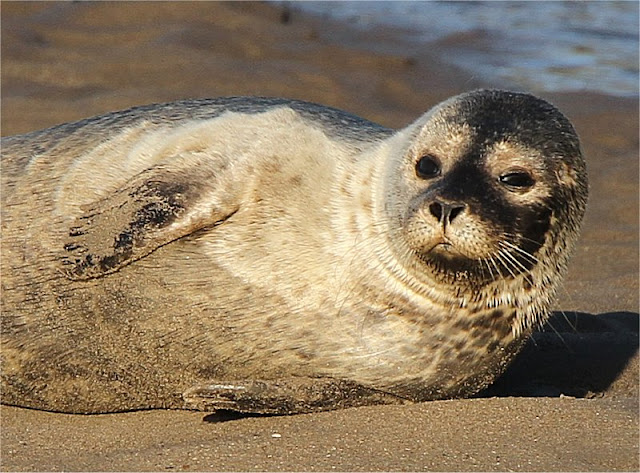Little Auk © John N Murphy
In recent years the Little Auk (Alle alle) or Dovekie has gone missing, with very few sighthings throughout Ireland. So, what has happened? Where have all these small auks gone? Looking back at past records, most normal winters would turn out observations of anywhere between 10 to 100 per annum. But in the last three years it is hard to find one, and not for the want of looking.
Little Auks are easily identified since they are only about the size of a Starling. These stubby little seabirds are so short and fat they seem to have no neck and no bill. In Ireland they normally occur in winter plumage, white from bill to tail and black above. The black extends over the eye making a black eye-mask and there are curious white 'scratch marks' on their backs.
Little Auks are easily identified since they are only about the size of a Starling. These stubby little seabirds are so short and fat they seem to have no neck and no bill. In Ireland they normally occur in winter plumage, white from bill to tail and black above. The black extends over the eye making a black eye-mask and there are curious white 'scratch marks' on their backs.
The Little Auk breeds on islands of the high Arctic. They have a wide distribution and are found on islands in the Bering Sea, from east Baffin Island in Canada, through Greenland to Iceland, Spitsbergen, Bear Island and the Jan Mayen Islands to Norway, stretching to Novaya Zemlya, Severnaya Zemlya and Franz Josef Land in Russia. They are migratory, expanding its range in winter to include the North Atlantic Ocean as far south as the Ireland and the north-east coast of the USA.
The Little Auk feeds mainly on small invertebrates such as copepods, amphipods and euphausiids and on fish larvae. The precise timing of its spring arrival at breeding colonies is variable depending on locality, from late February on Franz Josef Land to early May in north-west Greenland. Immense colonies are formed on sea coasts, usually nesting in crevices in rock scree of maritime slopes and on coastal cliffs. Colonies are abandoned in August with individuals seeking more southerly water.
In winter after severe North Westerly Storms, birds often appear off Irish waters. This is something we have had a lot of in recent autumns, plenty of gales and storms coming across the North Atlantic. But it still has not produced many Little Auks around our coasts. One of the reasons for this might be the abundance of food available in the wintering grounds off the North East American coastline. The warm labrador current meets cold waters flowing down from Baffin Bay and the high Arctic. Where these waters meet planxtonic life forms are plentiful.
Copepods are essential components of marine food webs worldwide. In the North Atlantic, they are thought to perform vertical migration and to remain at depths more than 500 m during winter. Winter feeding ecology of Little Auks and other seabirds in the North Atlantic found a high abundance of planktivorous life forms as their staple diet. By combining stable isotope and behavioral analyses, it is strongly suggested that swarms of copepods are still available to their predators in water surface layers (less than 50 m) during winter, even during short daylight periods. Using a new bioenergetic model, scientists have estimated that the huge numbers of little auks (20–40 million birds), wintering off southwest Greenland, consume 3600–7200 tonnes of copepods daily, strongly suggesting substantial zooplankton stocks in surface waters of the North Atlantic in the middle of the boreal winter. This abundance of food
must be one of the main reasons why Little Auks are not turning up here in winter. If they do get here chances are they might starve to death.
A small group of Copepods
So some advice for the Christmas Holiday period. If you are getting to the coast take your binoculars and camera. Search the tide and bays for small seabirds no bigger than a Starling. They must be here and remember, after the weather conditions we've had over the past few weeks, these Little Auks could just as easily be on an inland lake, wrecked due to these storms. They might even be in you back garden!
There have been 7 records thus far for 2011 in Ireland. They were: one at Ballinskelligs, one at Bray, one at Ramore Head, one at Tory Island, one at Island Magee, one at Timoleague and one at Dursey Island.




















































